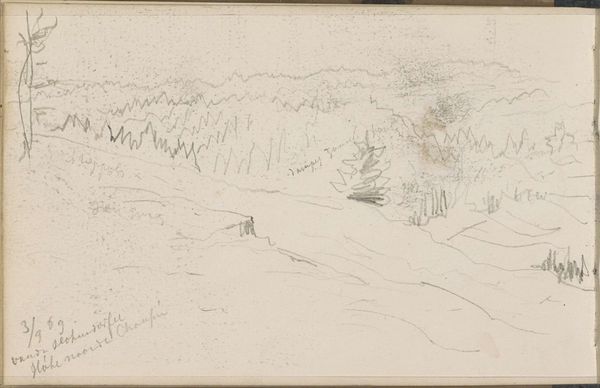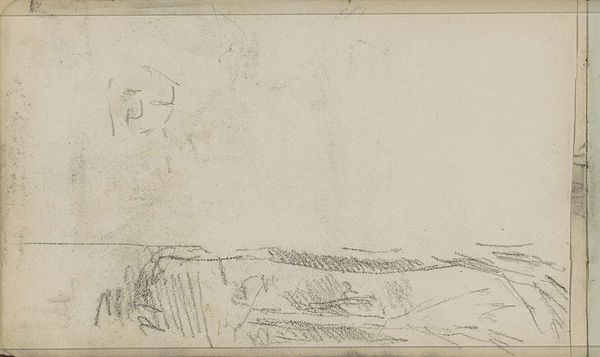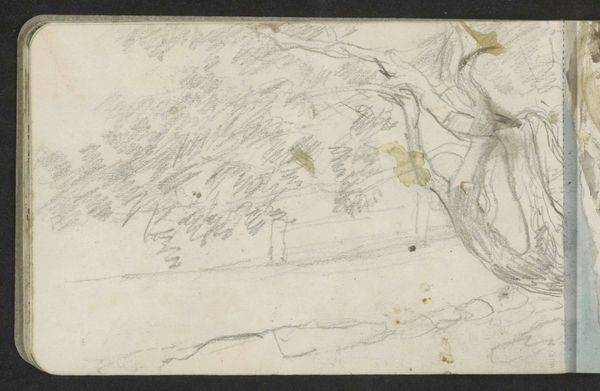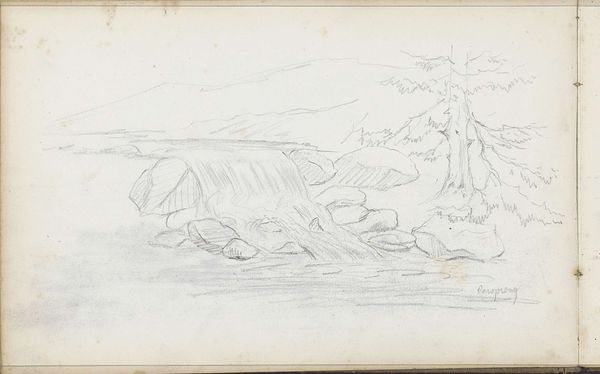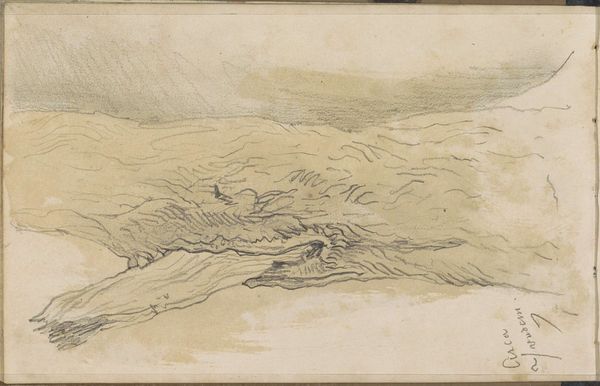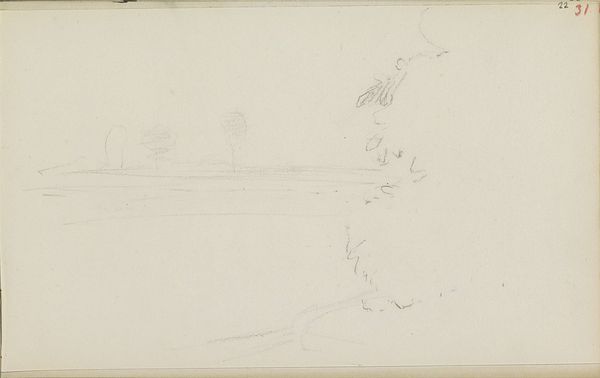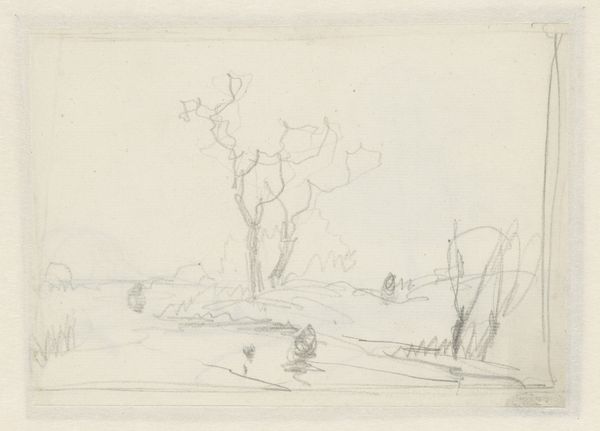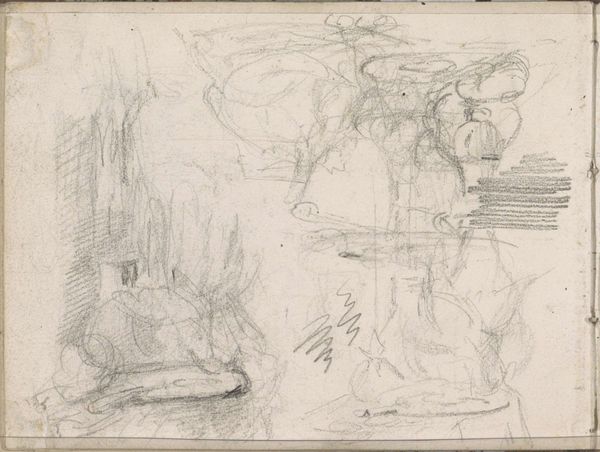
drawing, pencil
#
drawing
#
dutch-golden-age
#
pencil sketch
#
landscape
#
geometric
#
pencil
#
line
#
sketchbook drawing
#
cityscape
#
realism
Copyright: Rijks Museum: Open Domain
Curator: We're looking at "Gevels van huizen en een gebouw," a pencil drawing by Johannes Bosboom, likely created sometime between 1845 and 1891. It resides here at the Rijksmuseum. Editor: It appears unfinished, almost like a ghost city emerging from the paper. The lines are so faint and ephemeral; it's incredibly raw in its presentation. Curator: Indeed. The beauty lies precisely in its linework. The stark, almost skeletal quality emphasizes geometric forms of the buildings. Bosboom uses a restrained palette - or rather, a lack thereof - to focus on structure and the interplay of shapes. Think about how the repetition of horizontal and vertical lines creates rhythm. Editor: I'm struck by how this simplicity renders the architecture itself quite anonymous. There’s no sense of grandeur, just a row of buildings forming the backdrop for daily life. I wonder what social context this scene is conveying, reflecting on the role of urban space in 19th-century Dutch society? Curator: That's a fascinating point. However, what truly captures my interest is how he manipulates light, or rather the absence of shadow. By not shading intensely, he flattens the picture plane and invites contemplation on the very nature of architectural representation. Look at the subtle changes in pressure of the pencil, a delicate touch. Editor: To me, this sketch becomes significant as part of his broader exploration of urban existence at the time. As an image of transition where increasing urbanization began reshaping social dynamics and everyday routines. The lack of people emphasizes that. Curator: Perhaps. Nevertheless, stripping the drawing down to its most essential elements opens pathways to dissecting and deconstructing those built environments, not to get lost in any particular narrative but seeing the intrinsic architecture. Editor: I agree that by showing us this study of the town, it is an important lens into his creative and societal observation in the rapidly changing urbanized 19th century. It’s about history too. Curator: An utterly intriguing interaction. We will depart it here. Thank you for participating with these ideas.
Comments
No comments
Be the first to comment and join the conversation on the ultimate creative platform.



